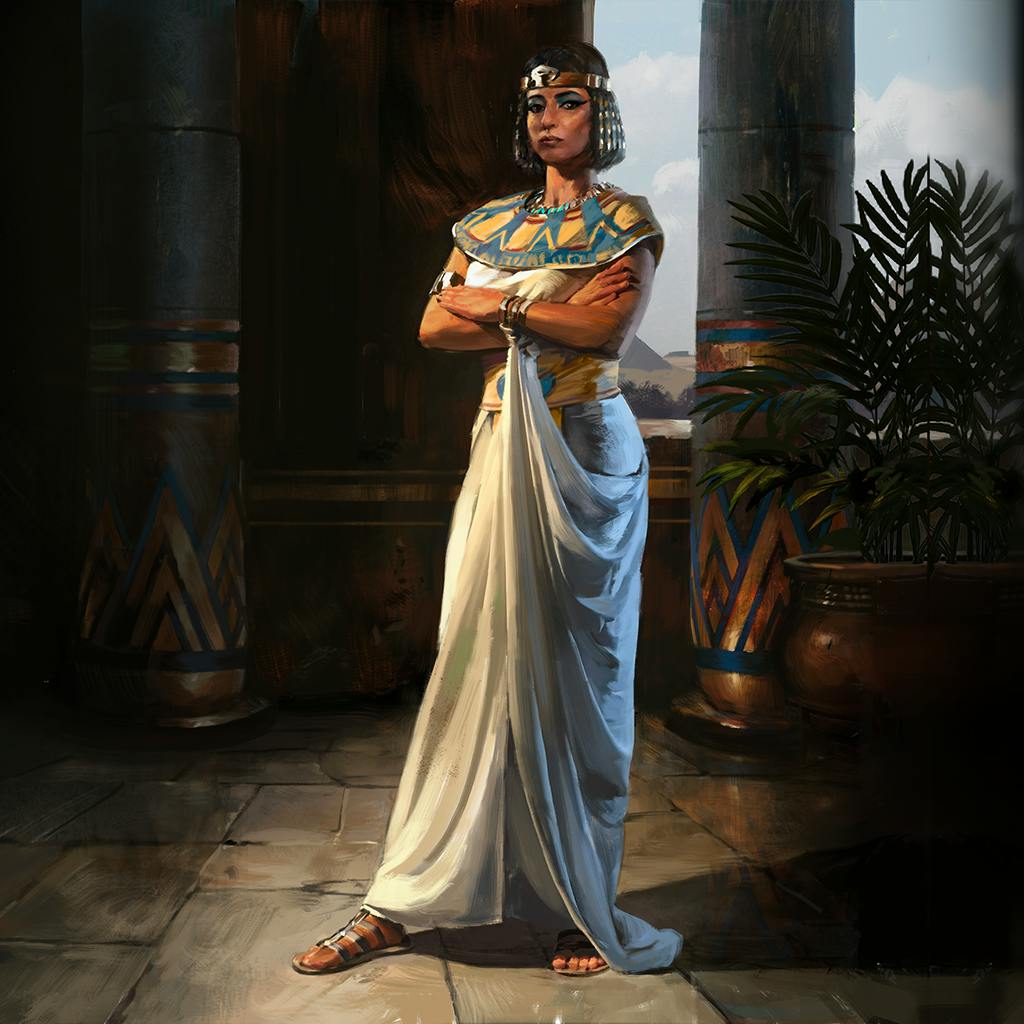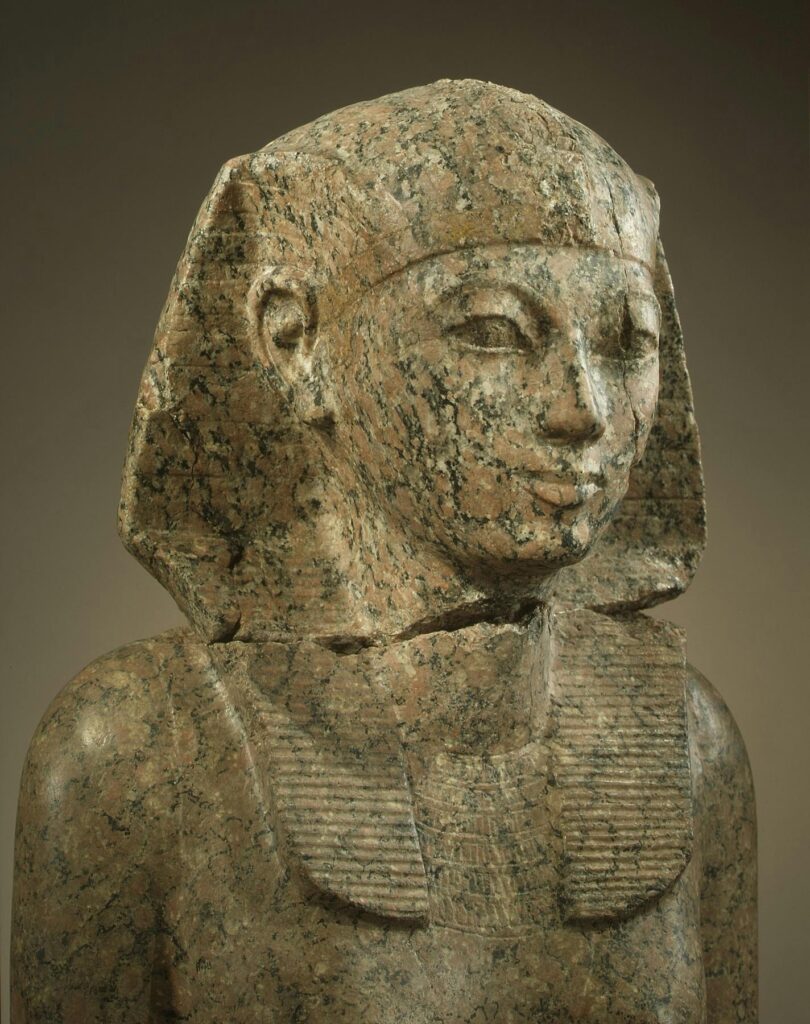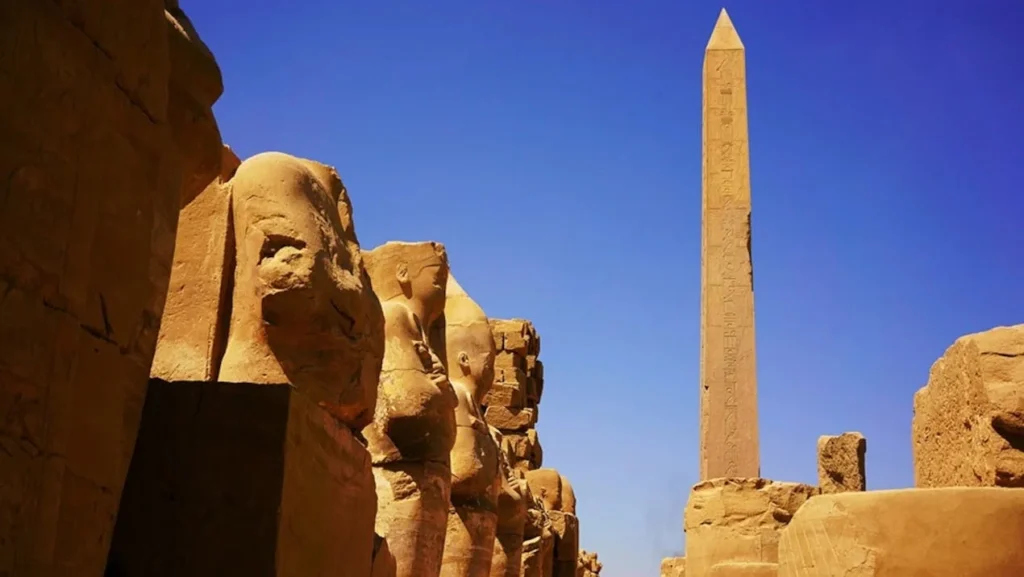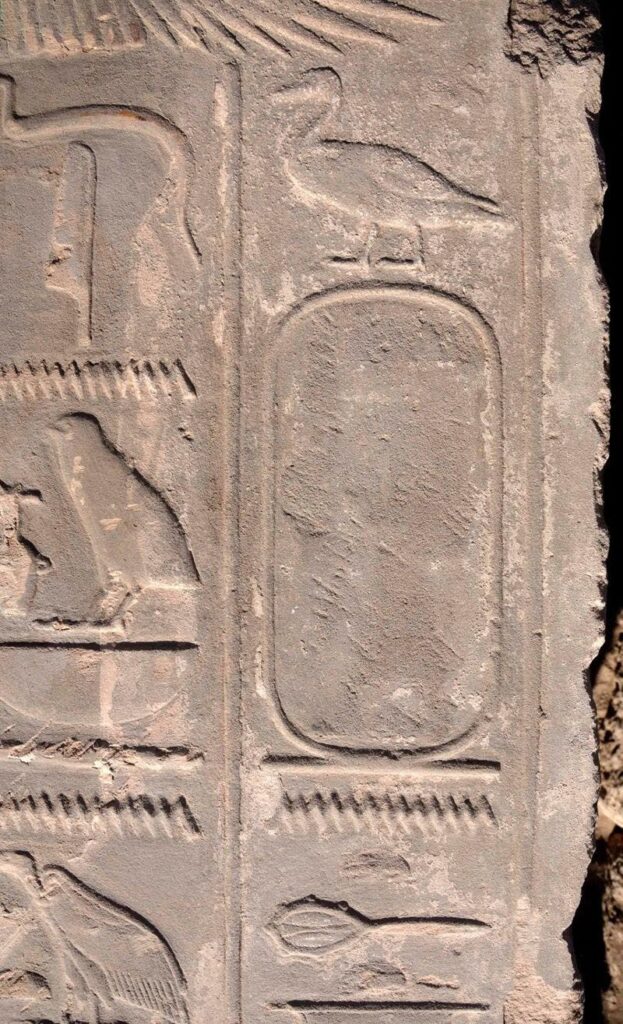In 15th century BCE Egypt, a remarkable woman ascended the throne and reigned for over 20 years. Defying tradition, Queen Hatshepsut (pronounced: haat·shuhp·soot) proclaimed herself Pharaoh, becoming one of few females to hold such power in ancient Egypt. Her dramatic life left an indelible mark on Egypt’s history and imagery. While later rulers tried erasing Hatshepsut’s legacy, her accomplishments and mysteries continue intriguing us today.

A ROYAL DAUGHTER OF EGYPT
Around 1504 BCE, Hatshepsut was born into a golden era in Egypt’s 18th dynasty. Her father was the prominent Pharaoh Thutmose I, a charismatic leader and military strategist who expanded Egypt’s empire through campaigns in Nubia and Syria.
Young Hatshepsut likely benefited from her privileged status as a pharaoh’s daughter. She became greatly devoted to her father, so much so that she would later re-inter him in her own tomb. By claiming her father appointed her his heir, Hatshepsut tied her controversial reign to his respected legacy.
As a royal daughter, Hatshepsut was destined for a political marriage. When their father died, her half-brother Thutmose II became pharaoh and married Hatshepsut to solidify his legitimacy. Although he was crowned pharaoh, historical accounts often portray Thutmose II as a weak and sickly ruler.

ACTING AS QUEEN REGENT
Thutmose II died young, leaving Hatshepsut widowed. Since her husband had borne no son as his successor, his heir instead became a child born to a secondary wife – Thutmose III.
Too young to rule alone, the boy king needed a regent. As tradition dictated, Hatshepsut took on the role given her proximity to the throne. Thutmose III was crowned pharaoh, while Hatshepsut governed in his name as queen. Though she didn’t yet hold the title of pharaoh herself, portraits from this period show Hatshepsut confidently exercising authority.
After several years as regent, Hatshepsut took the radical step of crowning herself pharaoh. She adopted the full titulary of a pharaoh, from royal names to religious duties. As Hatshepsut assumed complete power, she shrugged aside taboos against female kings. She reduced her stepson Thutmose III to a subordinate co-ruler, preventing him from challenging the pharaoh’s divine authority.
REWRITING TRADITION AS FEMALE KING
Why did Hatshepsut defy tradition to crown herself making her the queen who became a pharaoh? Early Egyptologists theorized she was an unscrupulous usurper exploiting her stepson’s youth. But today, scholars believe a crisis likely forced Hatshepsut’s hand.
With no strong male heir, royal infighting or civil unrest may have pressured Hatshepsut to take the throne as pharaoh for stability’s sake. Presenting herself as the legitimate divine ruler was key to solidifying power. As Hatshepsut wrote, “I have taken on the function of kingship, dignity has been set aright.”
To cement her authority, Hatshepsut ingeniously reinvented Egyptian iconography by blending masculine and feminine elements. Statues depicted her with the muscular frame and royal false beard of a male pharaoh. But she also braided her hair in feminine style and was addressed with female grammatical forms. This inventive hybrid image let Hatshepsut fuse political legitimacy with her unique situation as a female king.
Hatshepsut also tackled expectations that the pharaoh secure maat, the ancient Egyptian concept of divine order and justice. One method was completing ambitious architectural projects, which Hatshepsut pursued with gusto.

BUILDING A LEGACY IN STONE
Hatshepsut proved herself a prolific builder to reinforce perceptions of a strong, successful reign. She commissioned hundreds of construction projects across Egypt during her rule.
Obelisks, shrines, tombs – Hatshepsut’s monuments displayed her wealth and power. Her crowning achievement was a grand mortuary temple at Deir el-Bahri, built against soaring cliffs. Multiple colonnaded terraces connected the temple to the valley below.
Enormous statues of Hatshepsut, vivid mythological scenes, and reliefs of her achievements, such as the famous expedition to Punt, decorated the temple. The scale and splendor of Hatshepsut’s constructions unmatched those of prior female rulers.
However, Hatshepsut largely shared Egypt’s prosperity with her co-ruler Thutmose III. She allowed him to gain military experience that prepared him to eventually succeed her and become a formidable pharaoh himself. Their lengthy co-rule suggests it was not just personal ambition guiding Hatshepsut. She preserved stability and protected the throne by preventing others from seizing it.
ERASING A POWERFUL FEMALE KING
Hatshepsut died around 1458 BCE, likely in her late 40s. Afterward, an extensive campaign sought to erase her legacy as pharaoh. Her statues were smashed, images defaced, and name wiped from monuments. Early historians assumed her bitter stepson Thutmose III led this posthumous revenge.
But recent findings suggest these acts occurred later in Thutmose III’s reign, decades after Hatshepsut’s passing. Rather than vengeance, eliminating her memory may have aimed to prevent future unrest. Egyptologists theorize Thutmose III wished to preclude claims to the throne by those also related to Hatshepsut.

(Image credit: German Archaeological Institute)
Unable to erase her dazzling but controversial precedent, Thutmose III instead tried limiting its influence. Despite such calculated destruction, Hatshepsut’s achievements proved indelible.
UNRAVELING EGYPT’S MYSTERIES
In the 19th and 20th centuries, archaeologists found puzzling clues to Hatshepsut’s enigmatic history – shattered statues, partly erased images, and texts curiously omitting her name. Slowly her accomplishments and full reign as pharaoh were uncovered using new investigative tools.
In 2007, Egyptologists may have even identified Hatshepsut’s lost mummy using CT scanning. If confirmed, it could offer unprecedented insights into her life. From pioneering female ruler to subject of a systematic cover-up, Hatshepsut’s complex story illustrates the intrigues of ancient Egyptian politics.
Her vigorous reign as pharaoh expanded what Egyptian society thought possible. By boldly ascending as king despite tradition, Hatshepsut demonstrated rare political savvy and charisma. She paved the way for future female leaders like Cleopatra centuries later.
Though later rulers tried containing her precedent as an outlier, Hatshepsut’s shining legacy persevered. Her mysteries continue to captivate us today, revealing an extraordinary woman who hid in plain sight as a pharaoh.

 Additional Facts
Additional Facts
100 Tons
To honor her 16th year ruling Egypt, Hatshepsut commissioned monumental obelisks. However, one massive 42-meter obelisk cracked during construction. Had it been finished, the 1100-ton obelisk would have been the largest ever erected in Egypt.
12
Award-winning Egyptologist Joann Fletcher claims 12 women ruled as pharaohs, including lesser-known predecessors like Khentkawas and Hatshepsut. She notes Hatshepsut boasted “no one rebels against me in any land,” showing female pharaohs before Cleopatra and Nefertiti also held significant power.
2007
In 2007, researchers identified Hatshepsut’s mummy in Egypt’s Valley of the Kings. Analysis showed the obese, 5-foot-tall female suffered from diabetes, cancer, and dental issues when she died.



